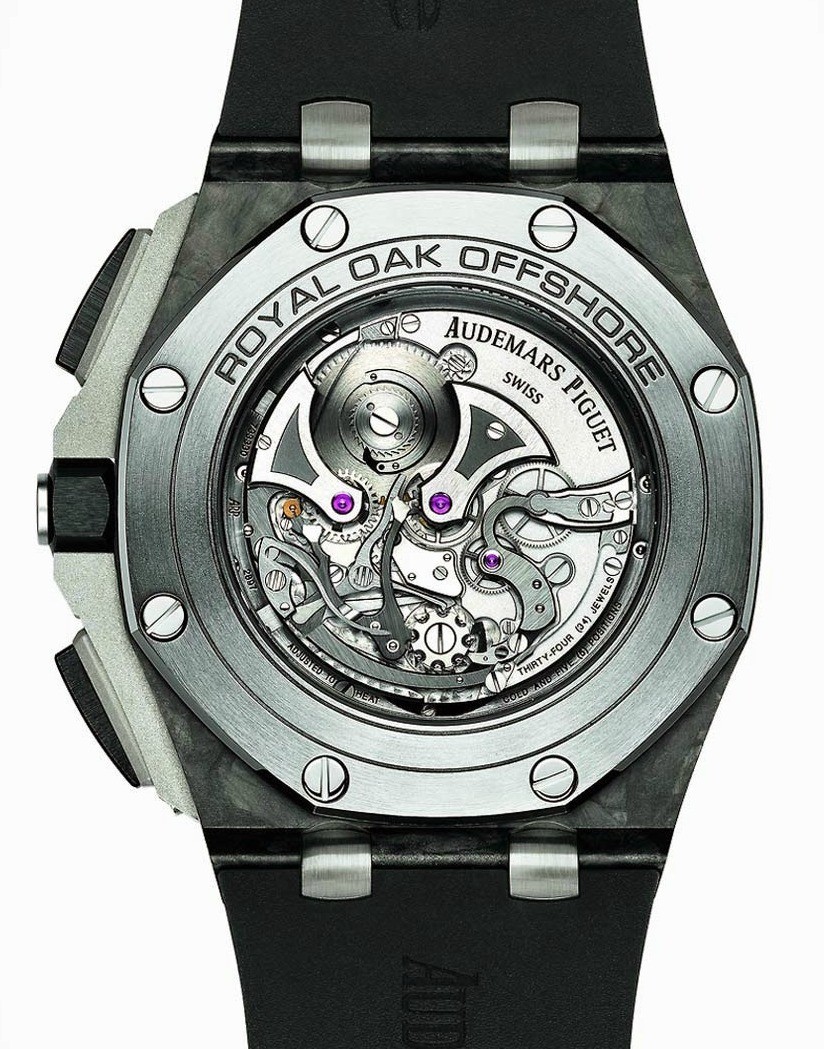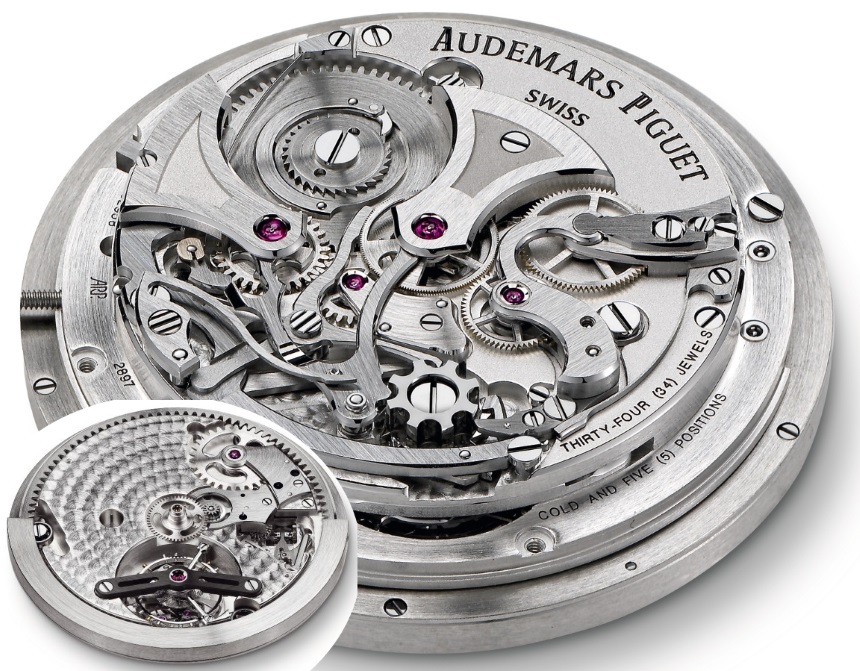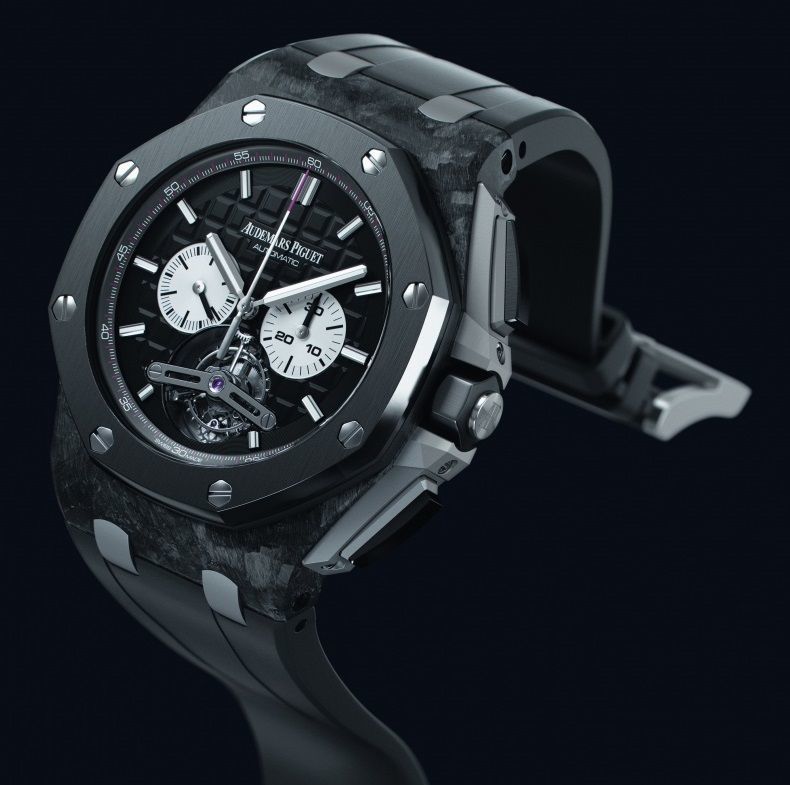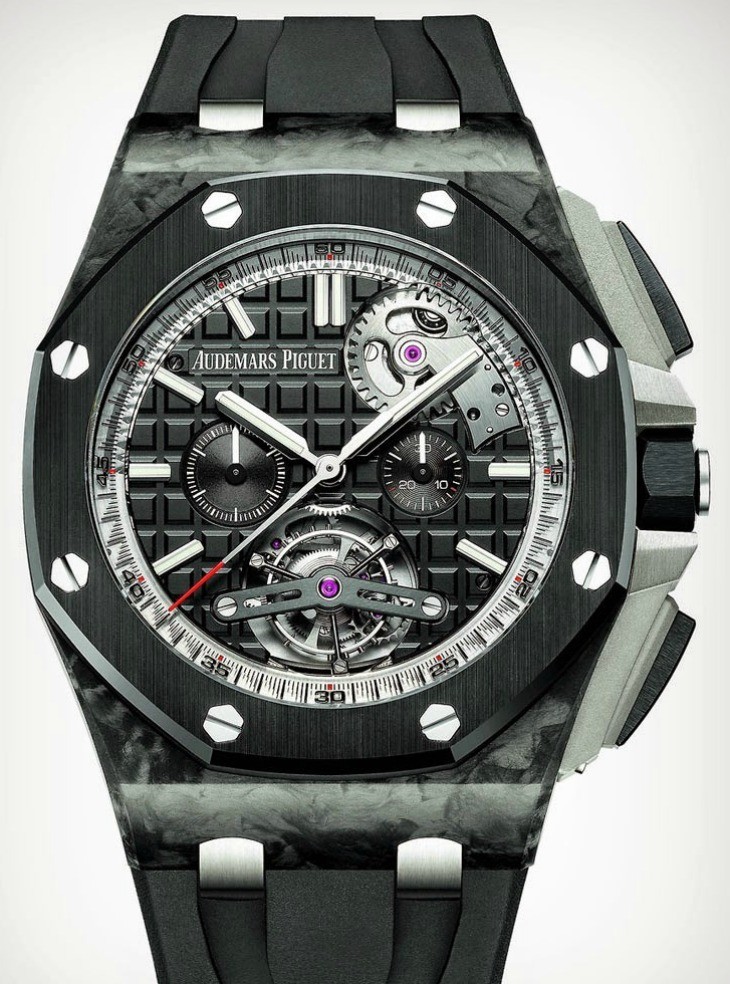
Ever since Carl F. Bucherer released their in-house made caliber A1000 movement in 2010 with a peripheral automatic rotor, I felt that more watches needed to integrate peripheral rotors in their mechanical movements. For 2014, Audemars Piguet releases a new ultra-high-end version of the Royal Oak Offshore with a new visible dial-mounted peripheral automatic rotor that exists in addition to a tourbillon and chronograph complication.
What is a “dial-mounted peripheral automatic rotor?” Many of you know, but I just realized that non-watch lovers might have a difficult time understanding the concept. Automatic rotors are part of a mechanical watch’s “self-winding” system and tend to be shaped like half circles placed on the rear of the movement. These half circle weights move with the motion of your wrist and wind the mainspring barrel that powers the watch movement. One issue that some aficionados have with automatic movements is that the rotors block a large part of the movement (even though they can be moved around) and that they cause movements to be thicker in size.


Peripheral automatic rotors don’t sit on top of a movement, but rather around it. There is usually a crescent-shaped weight that moves along a track which acts as the rotor. That is what movements such as the Carl F. Bucherer A1000 (and others with rear-mounted peripheral rotors) are like. In a watch like the Audemars Piguet Royal Oak Offshore Selfwinding Tourbillon Chronograph, the peripheral automatic rotor is actually mounted around the top part of the movement, and in this case, visible through the dial of the watch. In this timepiece, the rotor must be heavy enough to properly wind the movement so Audemars Piguet and Renaud & Papi (where the movement is produced) crafted the peripheral rotor from platinum.
The dial-mounted peripheral automatic rotor is a feature in the existing Audemars Piguet caliber 2897 movement that debuted a few years ago. Operating at 3Hz with 65 hours of power reserve, the movement is extremely finely decorated and visible through the caseback of the watch. Of course, there is no rotor there to block the extensive level of hand-finishing on the movement – which is precisely why peripheral rotors are valued. This new 2014 watch release is essentially a new version of the Audemars Piguet Royal Oak Offshore Automatic Tourbillon Chronograph ref. 26550AU.OO.A002CA.01 that was originally debuted in 2011, but never actually released for sale. So in a sense this new model is the summation of project started by the brand years ago.

Never released Audemars Piguet Royal Oak Offshore Automatic Tourbillon Chronograph ref. 26550AU.OO.A002CA.01
Over on the dial you see a very rare sight – a semi-skeletonized Royal Oak Offshore dial (well, other than for the tourbillon). Audemars Piguet does produce a limited number of fully skeletonized Royal Oak movements, but they don’t go semi-skeletonized that often. The decision to do so was likely due to the fact that the large gear on the dial exposed at 1 o’clock moves as the rotor spins around the dial. Around the dial is a transparent region where the rotor itself can be seen moving. This added sense of visual animation makes it worthwhile for Audemars Piguet to change the look of this Royal Oak Offshore dial – something which the brand typically protects. In order to deal with the exposed gear element, the chronograph subdial needed to be decreased in size, while the running second subdial to the left is just a touch larger. The lower part of the dial offers a view of the tourbillon – the only area of semi-skeletonization that you see with frequency in Audemars Piguet timepieces.

Like most Audemars Piguet Royal Oak Offshore watches of this style the Audemars Piguet Royal Oak Offshore Selfwinding Tourbillon Chronograph comes in a 44mm wide case, here produced from a combination of black ceramic, forged carbon, and titanium. It offers a very sporty look, but wearers likely appreciate the fine delicacy of the movement inside. This Audemars Piguet Royal Oak Offshore Selfwinding Tourbillon Chronograph watch will be officially debuted in late September at the still new Watches & Wonders for 2014. Price will likely be in the vicinity of $300,000. audemarspiguet.com
